There are over 1,100 species of animals who call Alaska their home, at least for a portion of the year. Following are just a few of the common ones you’ll likely see on an Alaska small ship adventure cruise.
Alaska Marine Wildlife 
Humpback, Grey & Minke Whales
Every year, whales return to Southeast Alaska’s food-rich waters, feeding on small schooling fish, or on krill. Humpback whales are most common, from Frederick Sound to Chatham Strait and Stephens Passage. If you’re lucky, you’ll experience a total breach by a single whale, or bubblenet feeding by a group of whales.

Killer Whales (Orcas)
Experience killer whales, as they navigate Alaskan waters in the hunt for food. Orcas come in two flavors, resident (fish-eating) and transient (mammal-eating). If luck is in your favor, you’ll experience pods of killer whales hunting as a group, using various tactics to obtain their next meal.

Sea Lions
Steller sea lions can be found on South Marble Island in Glacier Bay National Park. Larger than the more familiar California sea lions, they are noisy but they give out a loud belching roar rather than a bark. They feed on fish like herring and salmon, as well as marine invertebrates like squid and octopus.

Harbor seals
Harbor seals are curious marine animals, typically resting on floating icebergs, or bergies as they’re called by locals. You’ll catch these natural entertainers, potentially along with their young pups, on icebergs in front of glaciers, like Sawyer Glacier in Tracy Arm.

Sea Otters
90% of the world’s sea otters can be found in coastal Alaska, along rocky coastlines, shallow coastal waters and thick kelp forests. Once hunted almost to extinction for their beautiful pelts, these eating machines consume up to 25% of their body weight to stay warm in chilly Pacific waters. Keep an eye out for them and prepare to be entertained.

Salmon
Salmon are an important part of the history, culture, ecology, and economy of Southeast Alaska. They begin life in freshwater, go to sea to feed and grow, and then return to the freshwater environment to spawn and create the next generation before they die. There are five species of Pacific salmon: king or chinook; silver or coho; red or sockeye; pink or humpback; and chum or dog salmon.
Alaska Land Wildlife 
Bears
There are plenty of opportunities to observe one of three bear species (polar, brown and black) that call Alaska home. Brown and grizzly bears are of the same species; the term grizzly reserved for the smaller brown bears of the interior and Arctic. The brown bears of Southeast Alaska seen on Alaskan cruises are best called coastal brown bears. Males reach over 1,000 pounds and stand nine feet on their hind legs.

Mountain goat
Alaskan mountain goats can commonly be seen high up on the rugged terrain along the fjords leading to the glaciers of Alaska. Their snow-white coat allows them to stand out from their rocky, inaccessible cliffs. If you’re lucky, you may catch them at low tide, at the waterline to feed on algae.

Deer
The Sitka black-tail deer are commonly found nibbling on algae along the shore on Baranoff Island, Chichagof Island, the Inian Islands and Mitkof Island, amoung other locations throughout Southeast Alaska.
Alaska Birds 
Eagles
Bald eagles thrive in the temperate rainforest of coastal Alaska. Bald eagles usually nest along the coastline or major rivers, so an Alaska cruise provides daily sightings of these magnificent birds. You’ll commonly find bald eagles hunting alongside brown bears, fishing for spawning salmon.

Puffins
Tufted puffins are remarkable birds, with the ability to dive deep into the water searching for the fish and krill, even using their wings as “fins” underwater. Their yellow eyebrows and large orange beaks make puffins a special site to see; a favorite among the birdwatching community. You can catch them furiously flapping their wings at several locations in Alaska, specifically near South Marble Island approaching Glacier Bay.

Arctic Terns
Arctic Terns are coastal birds that feed almost entirely on fish, which they catch by dropping on them from above the water. They bring freshly caught fish for their nestlings to eat rather than regurgitate predigested food. They nest in colonies and can commonly be found near glaciers.
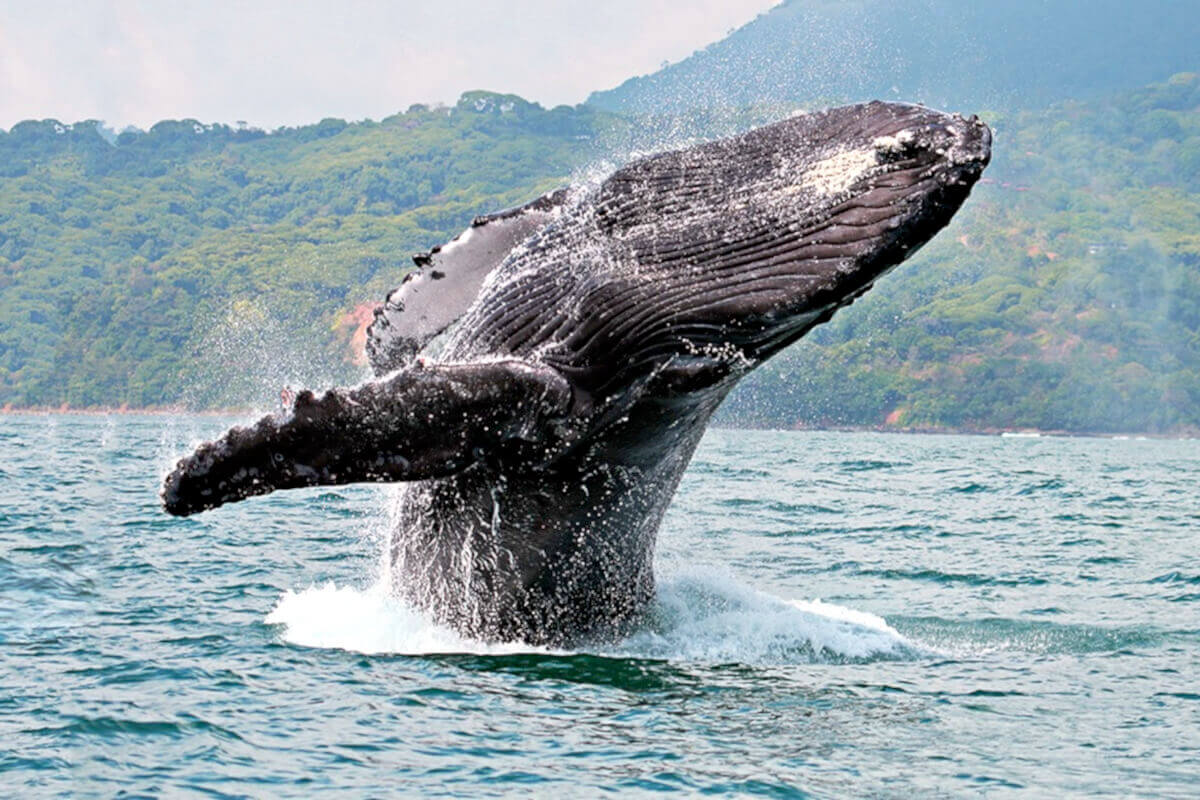
Humpback, Grey & Minke Whales
Every year, whales return to Southeast Alaska’s food-rich waters, feeding on small schooling fish, or on krill. Humpback whales are most common, from Frederick Sound to Chatham Strait and Stephens Passage. If you’re lucky, you’ll experience a total breach by a single whale, or bubblenet feeding by a group of whales.
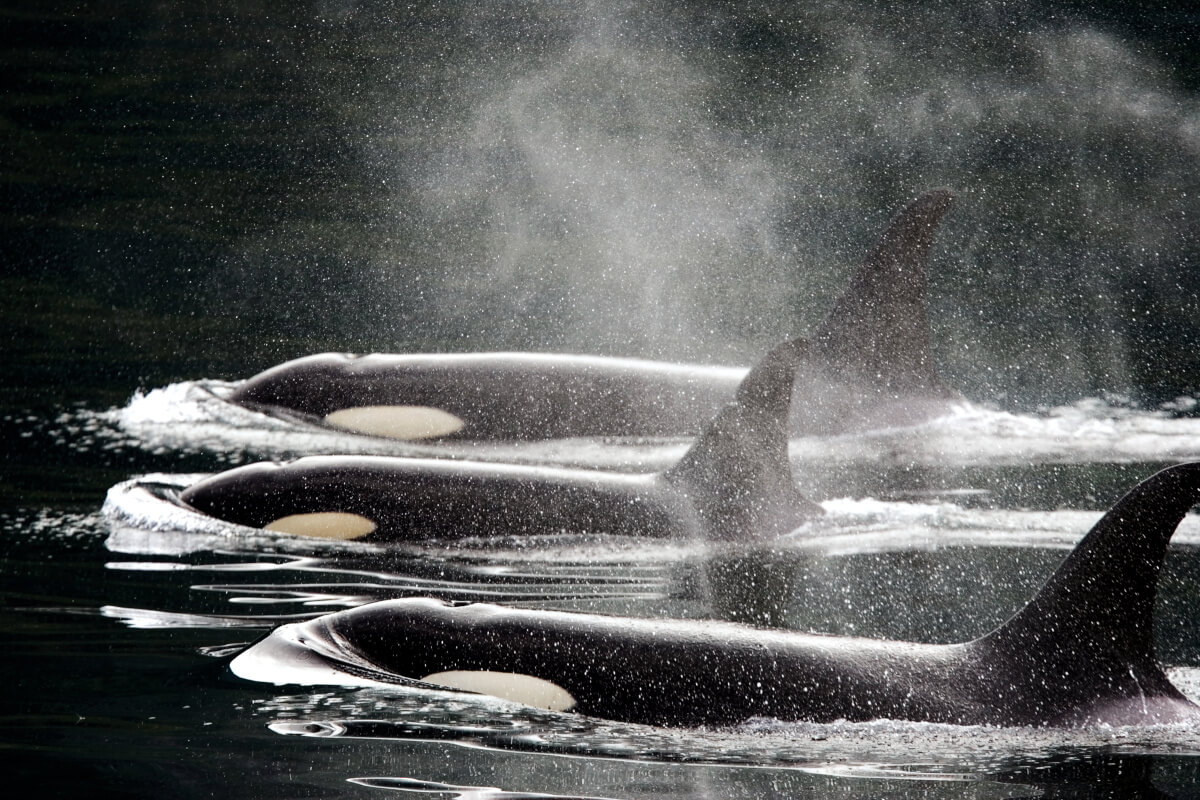
Killer Whales (Orcas)
Experience killer whales, as they navigate Alaskan waters in the hunt for food. Orcas come in two flavors, resident (fish-eating) and transient (mammal-eating). If luck is in your favor, you’ll experience pods of killer whales hunting as a group, using various tactics to obtain their next meal.
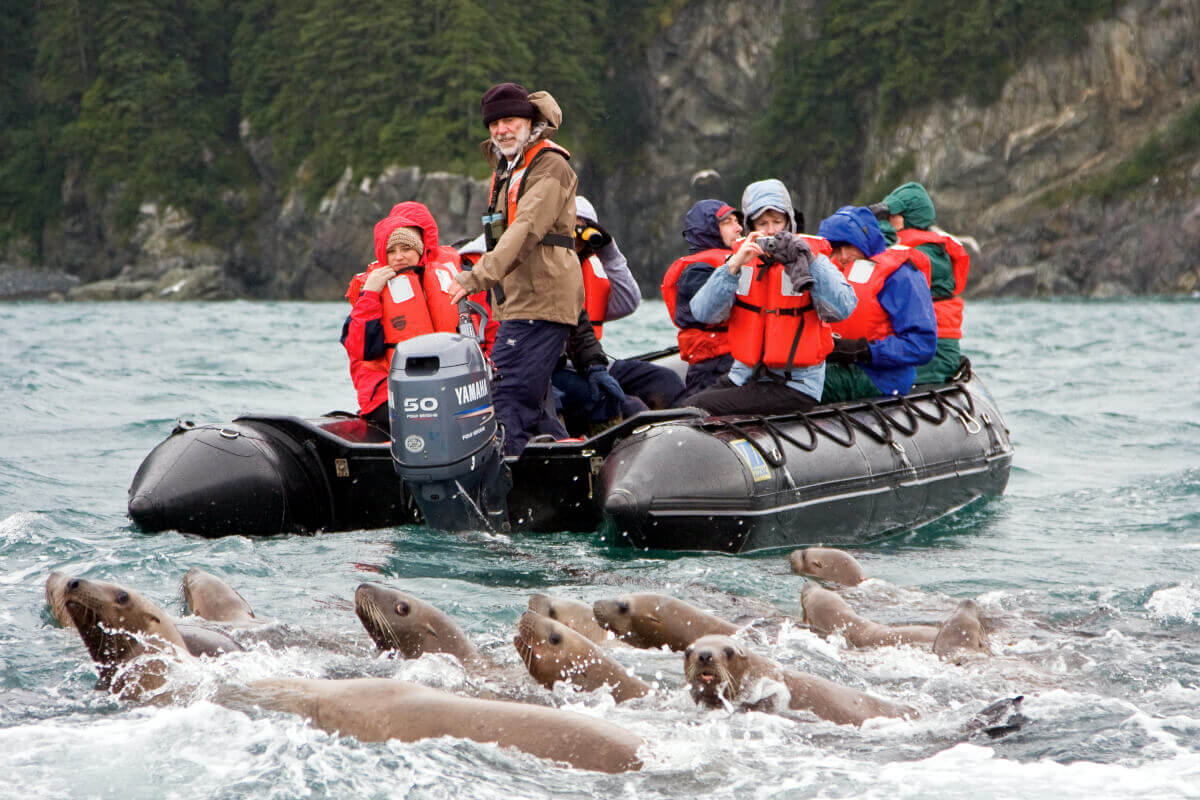
Sea Lions
Steller sea lions can be found on South Marble Island in Glacier Bay National Park. Larger than the more familiar California sea lions, they are noisy but they give out a loud belching roar rather than a bark. They feed on fish like herring and salmon, as well as marine invertebrates like squid and octopus.
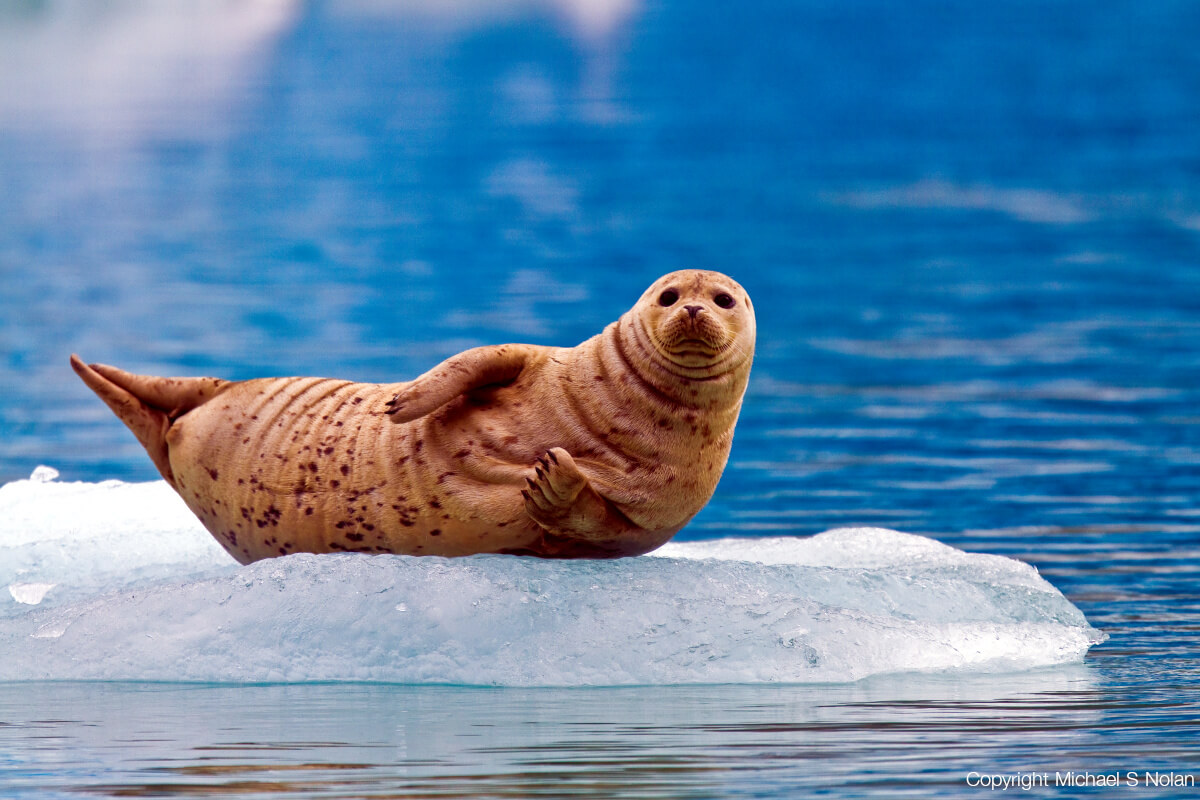
Harbor seals
Harbor seals are curious marine animals, typically resting on floating icebergs, or bergies as they’re called by locals. You’ll catch these natural entertainers, potentially along with their young pups, on icebergs in front of glaciers, like Sawyer Glacier in Tracy Arm.
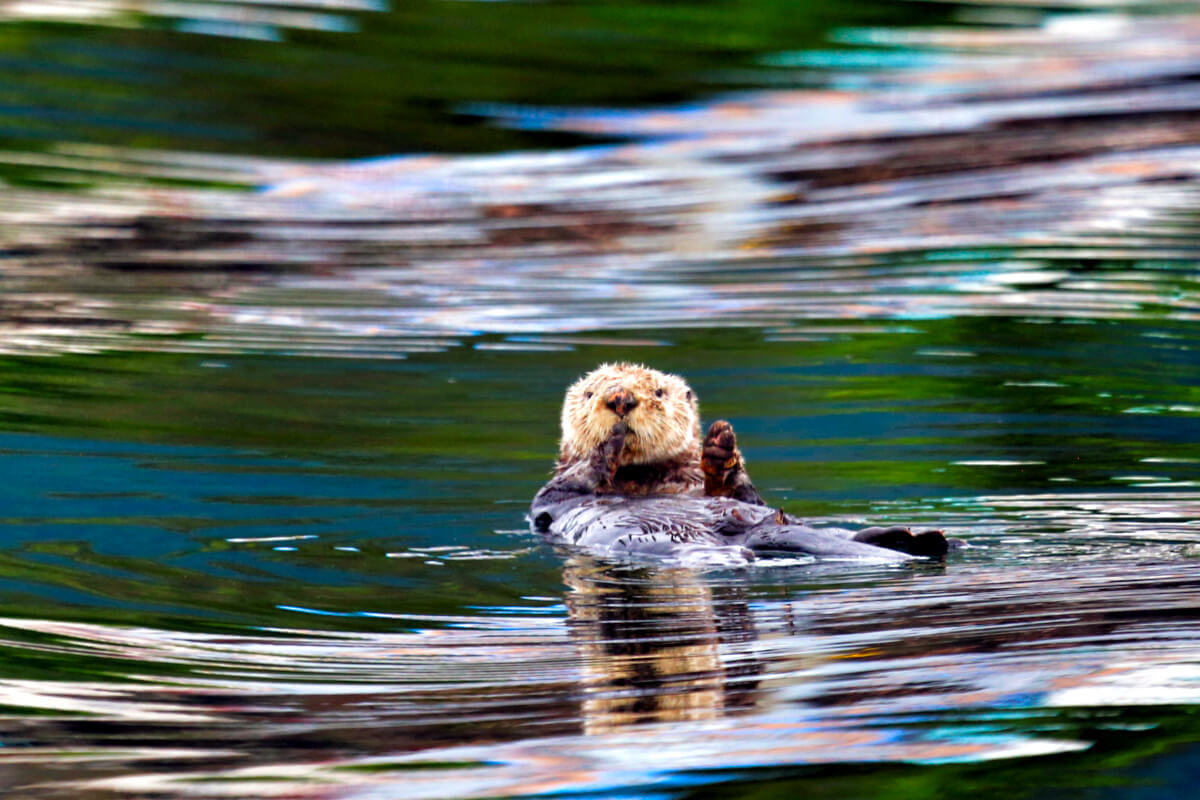
Sea Otters
90% of the world’s sea otters can be found in coastal Alaska, along rocky coastlines, shallow coastal waters and thick kelp forests. Once hunted almost to extinction for their beautiful pelts, these eating machines consume up to 25% of their body weight to stay warm in chilly Pacific waters. Keep an eye out for them and prepare to be entertained.
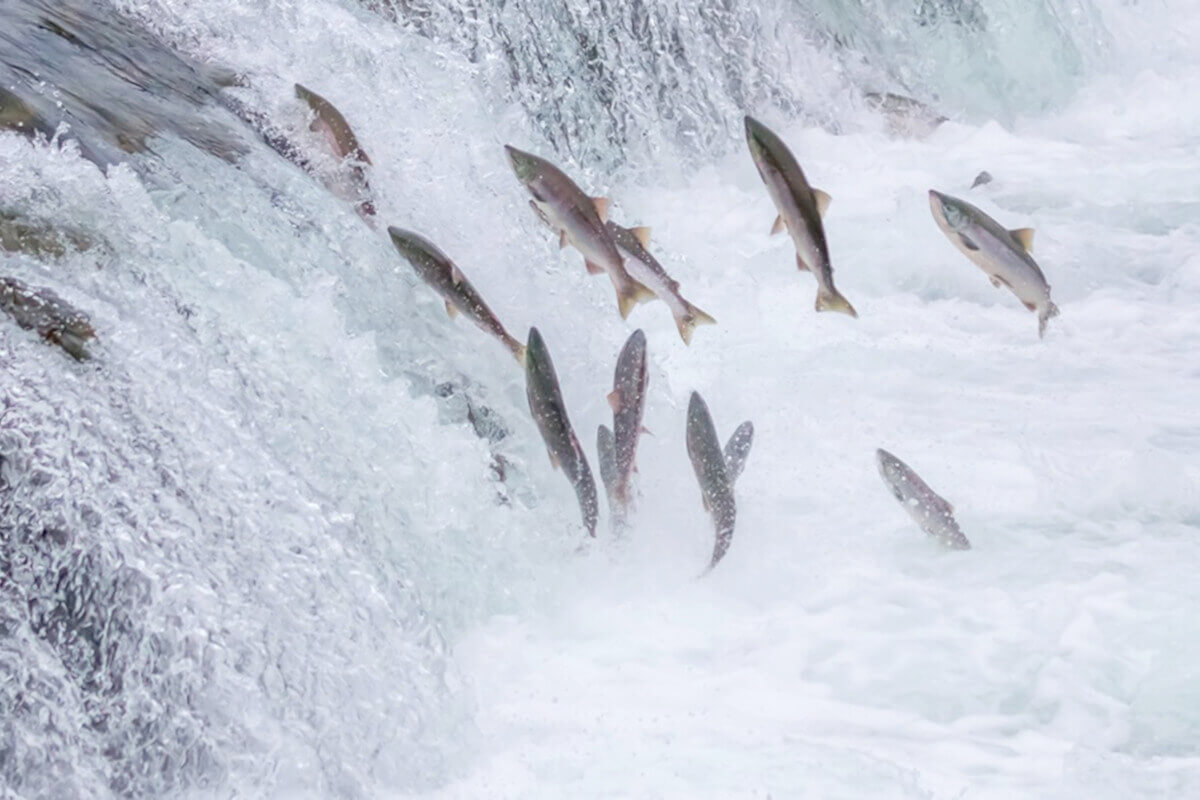
Salmon
Salmon are an important part of the history, culture, ecology, and economy of Southeast Alaska. They begin life in freshwater, go to sea to feed and grow, and then return to the freshwater environment to spawn and create the next generation before they die. There are five species of Pacific salmon: king or chinook; silver or coho; red or sockeye; pink or humpback; and chum or dog salmon.
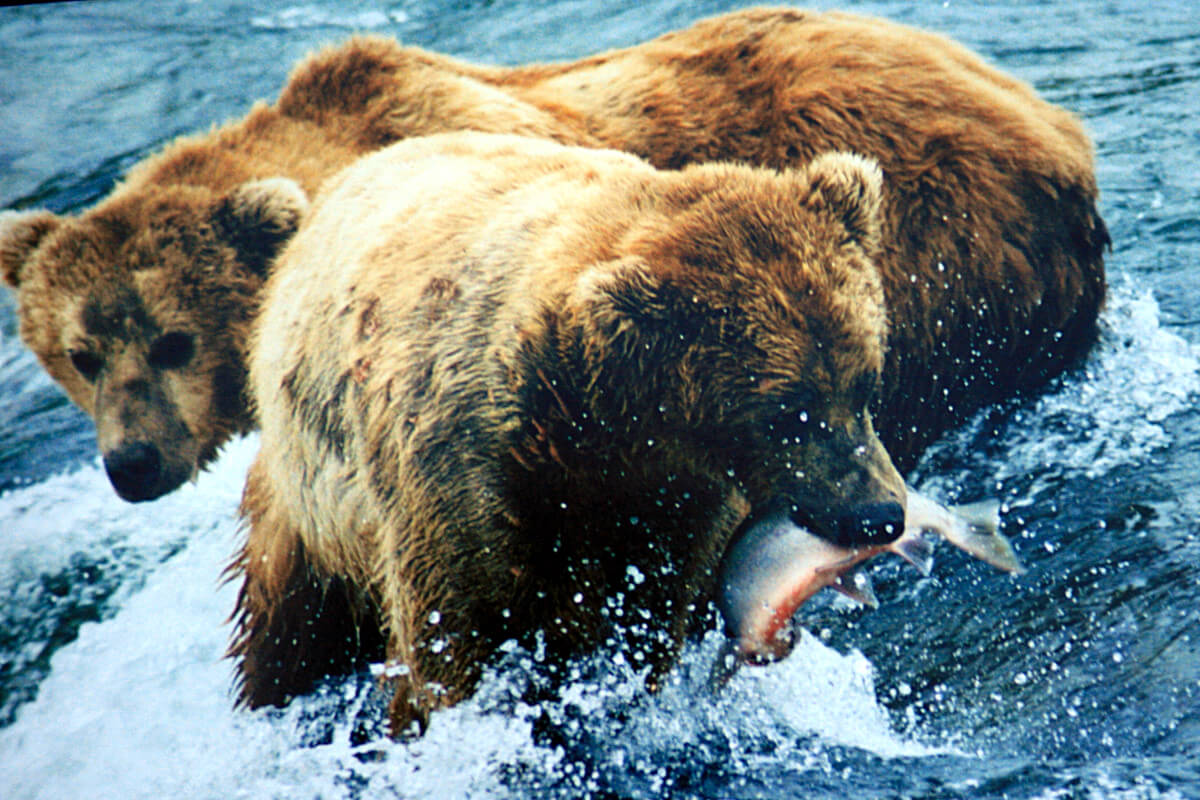
Bears
There are plenty of opportunities to observe one of three bear species (polar, brown and black) that call Alaska home. Brown and grizzly bears are of the same species; the term grizzly reserved for the smaller brown bears of the interior and Arctic. The brown bears of Southeast Alaska seen on Alaskan cruises are best called coastal brown bears. Males reach over 1,000 pounds and stand nine feet on their hind legs.
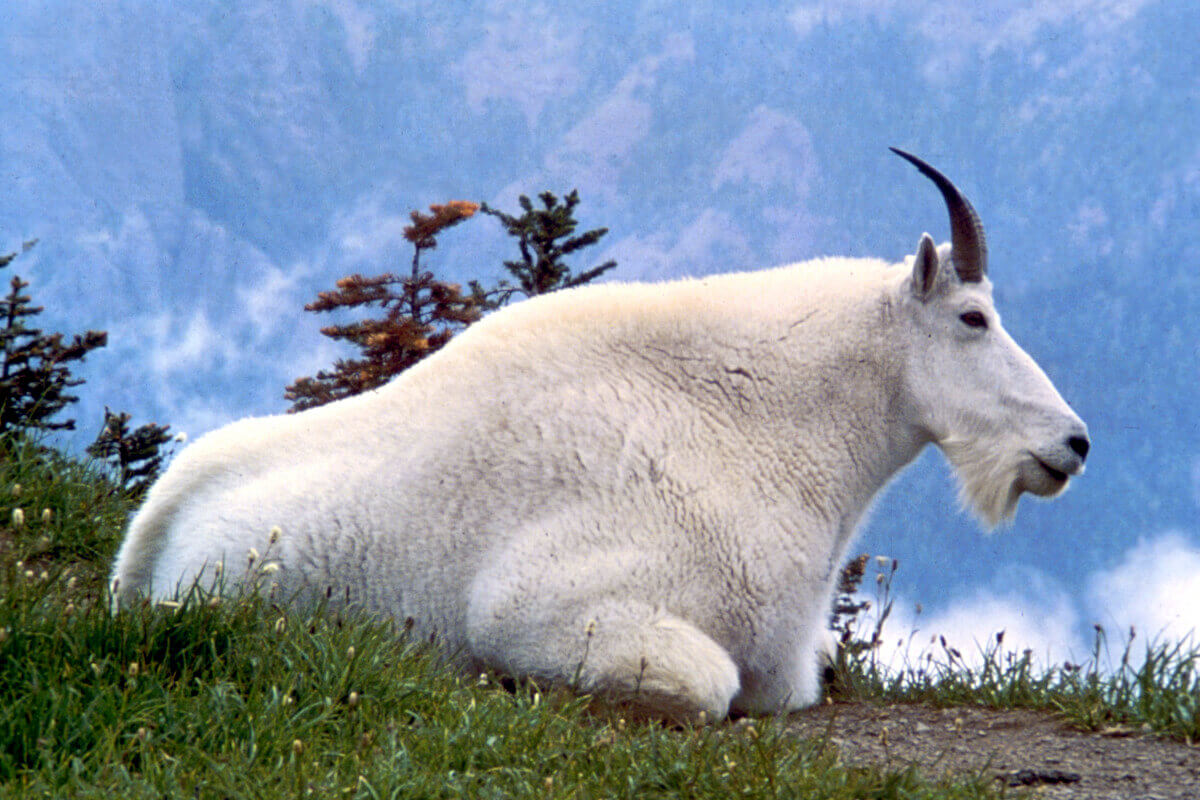
Mountain goat
Alaskan mountain goats can commonly be seen high up on the rugged terrain along the fjords leading to the glaciers of Alaska. Their snow-white coat allows them to stand out from their rocky, inaccessible cliffs. If you’re lucky, you may catch them at low tide, at the waterline to feed on algae.
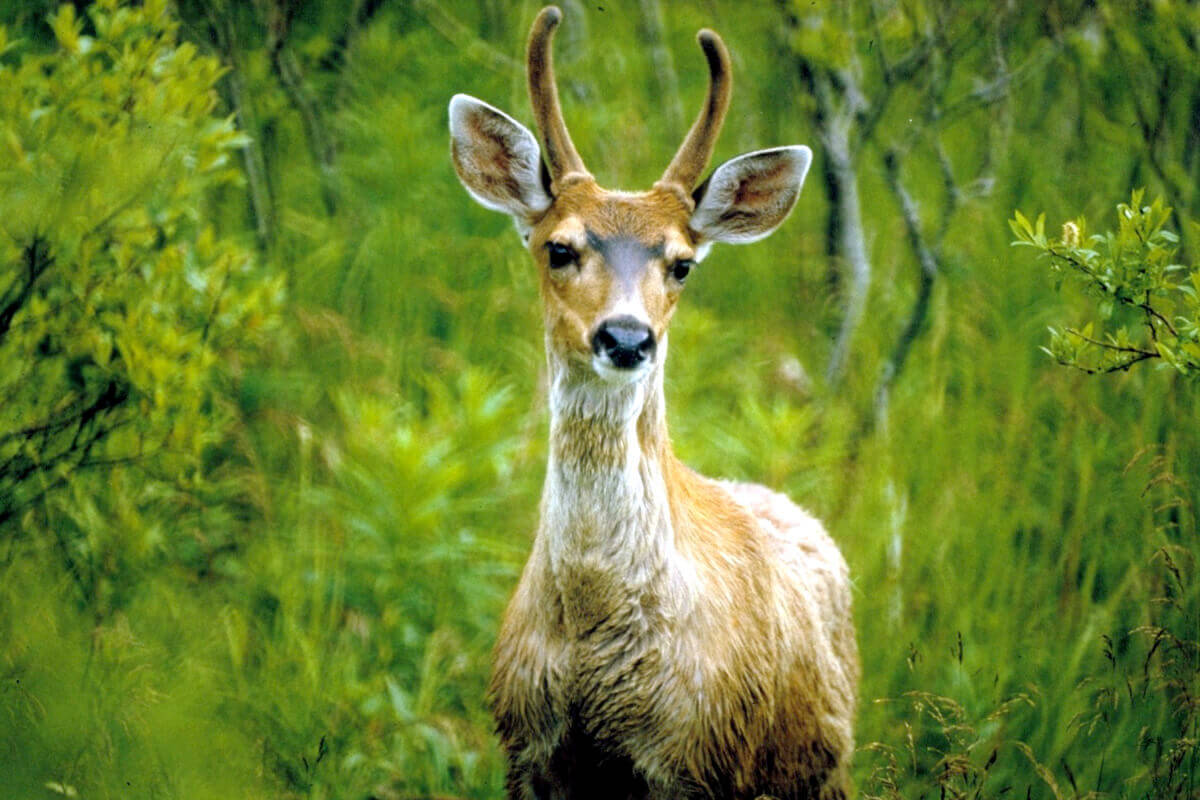
Deer
The Sitka black-tail deer are commonly found nibbling on algae along the shore on Baranoff Island, Chichagof Island, the Inian Islands and Mitkof Island, amoung other locations throughout Southeast Alaska.
Alaska Birds 
Eagles
Bald eagles thrive in the temperate rainforest of coastal Alaska. Bald eagles usually nest along the coastline or major rivers, so an Alaska cruise provides daily sightings of these magnificent birds. You’ll commonly find bald eagles hunting alongside brown bears, fishing for spawning salmon.

Puffins
Tufted puffins are remarkable birds, with the ability to dive deep into the water searching for the fish and krill, even using their wings as “fins” underwater. Their yellow eyebrows and large orange beaks make puffins a special site to see; a favorite among the birdwatching community. You can catch them furiously flapping their wings at several locations in Alaska, specifically near South Marble Island approaching Glacier Bay.

Arctic Terns
Arctic Terns are coastal birds that feed almost entirely on fish, which they catch by dropping on them from above the water. They bring freshly caught fish for their nestlings to eat rather than regurgitate predigested food. They nest in colonies and can commonly be found near glaciers.
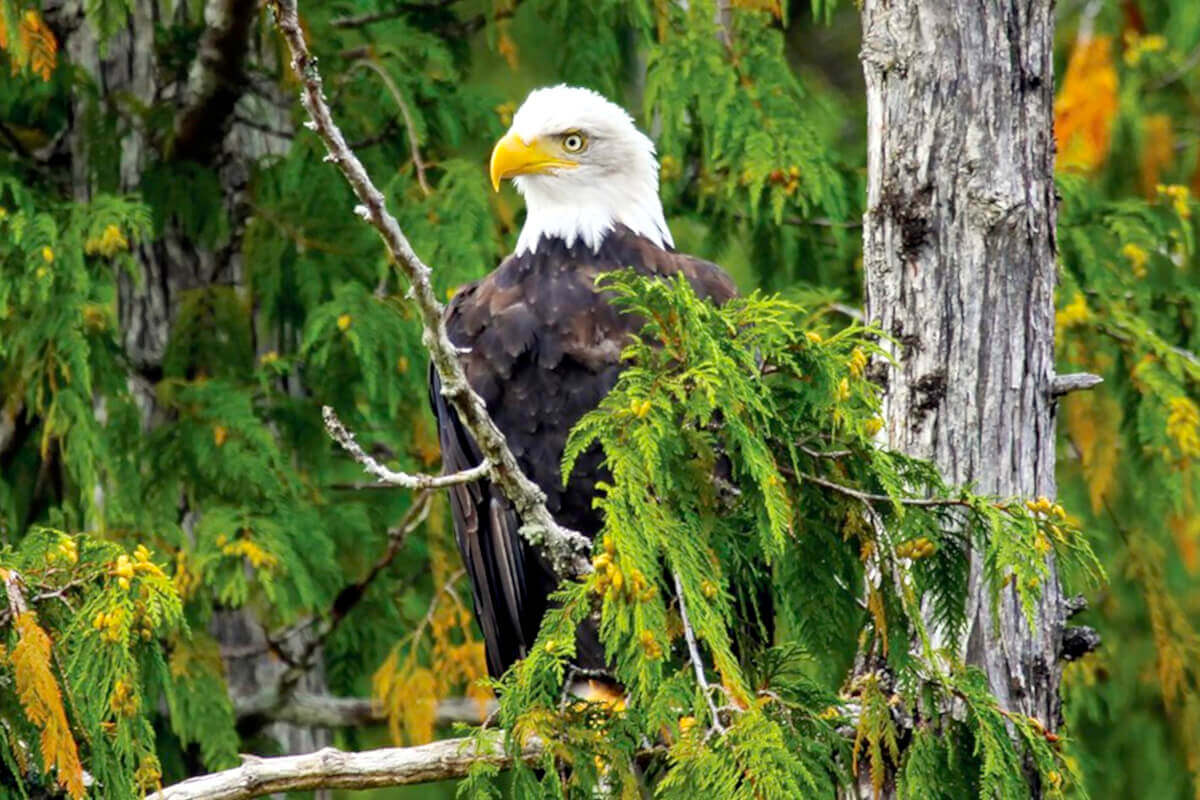
Eagles
Bald eagles thrive in the temperate rainforest of coastal Alaska. Bald eagles usually nest along the coastline or major rivers, so an Alaska cruise provides daily sightings of these magnificent birds. You’ll commonly find bald eagles hunting alongside brown bears, fishing for spawning salmon.
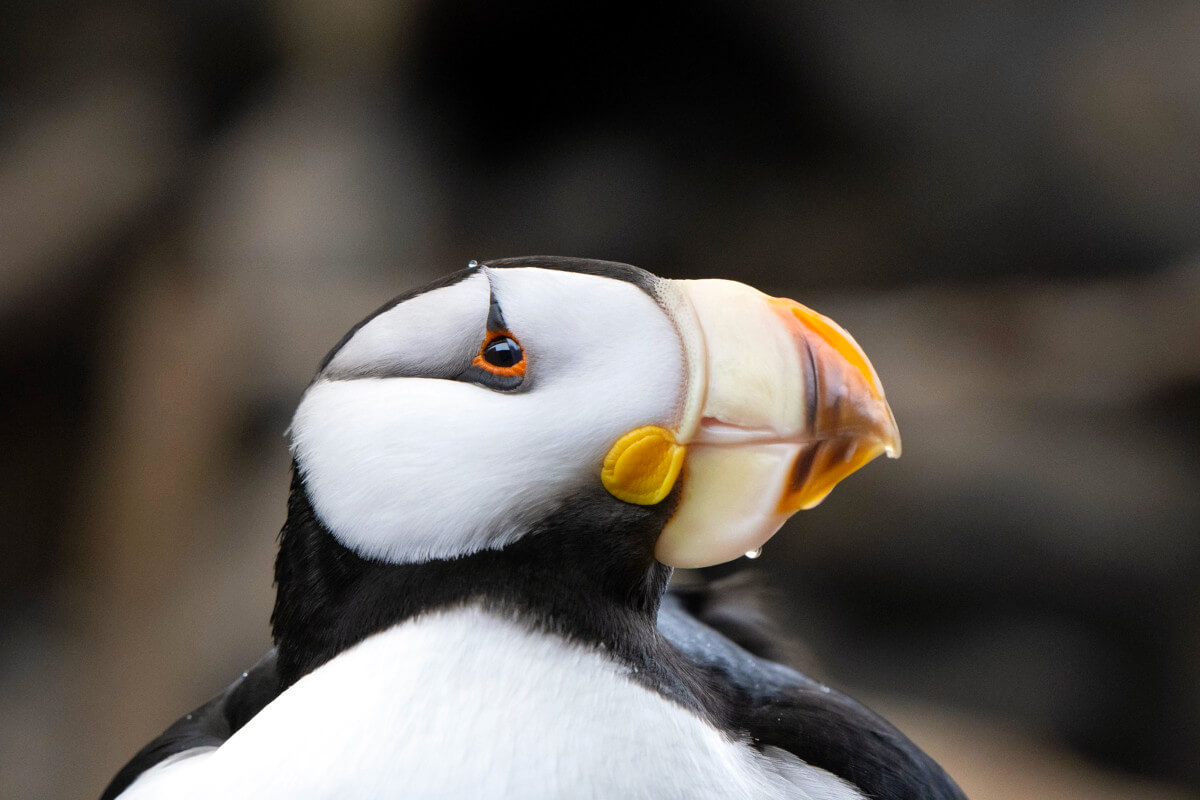
Puffins
Tufted puffins are remarkable birds, with the ability to dive deep into the water searching for the fish and krill, even using their wings as “fins” underwater. Their yellow eyebrows and large orange beaks make puffins a special site to see; a favorite among the birdwatching community. You can catch them furiously flapping their wings at several locations in Alaska, specifically near South Marble Island approaching Glacier Bay.
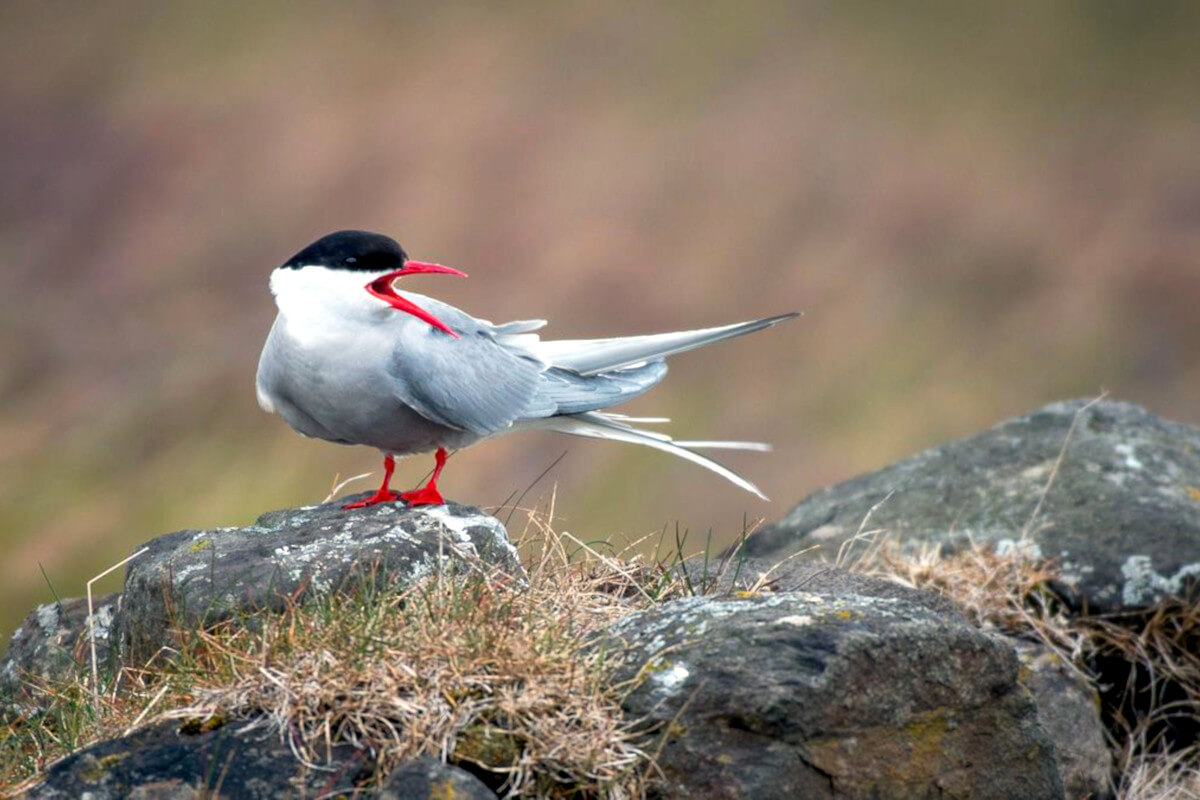
Arctic Terns
Arctic Terns are coastal birds that feed almost entirely on fish, which they catch by dropping on them from above the water. They bring freshly caught fish for their nestlings to eat rather than regurgitate predigested food. They nest in colonies and can commonly be found near glaciers.


